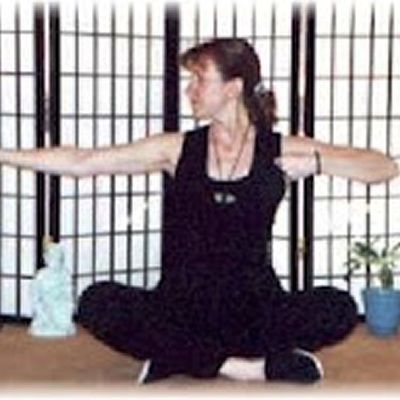
Q:
I want to thank you for sharing your exercises under Taoist Temple Seated QiGong. I have been practicing QiGong for several years, and found your series wonderful and so complete.
I have some questions:
Can I introduce some other movements and do they have to be so slow?
I have done a different form of QiGong and the teacher in that school says that one should not do so many different QiGongs at the same time. Somehow I feel that that has some logic in it.
In my other form they have a movement which is static, you stay seven minutes still with the Hands on the area of the third eye, then seven minutes on the area of the dantian, then on top of the head and at last on the sides.
My question here is, why is this posture not found in any other qigong? And why does he say one cannot do this if one does not belong to this school?
Somehow this form works wonderfully and I would like to continue doing These and then continue with yours? (I would not hold each Position for 7 minutes, only three.)
Could you give me advise to unburden my Feeling of guilt if I do this?
Thank you so much in advance. I wish you all the best,
SW, Mexico
A:
I’m happy you enjoy the Taoist Temple Seated QiGong. I’ll try to answer your questions.
In most cases the pace of QiGong should match your breath, so the movements can be as slow or fast as you are breathing. There are, however, some QiGong forms that disregard the breath and you move according to the feel of Qi which can sometimes be fast or slow.
Many QiGong forms have a specific purpose or Energy Flow they are creating. Because of this, if you introduce different movements or change the order, you can change the meaning of the form. This is only awareness though, it doesn’t mean it’s forbidden to do, but many teachers advise against changing the form in any way because of the energy flow and purpose it has – they know it works as it is and expect that to be respected.
My personal feeling is that it’s a good idea to practice a form as it is taught, and really work with it consistently and with sincerity for a period of time, minimum 100 days. After that, if there are certain movements you want to add in the form that feel really good to do, then there is an intelligence in your body that knows they are beneficial to you in some way so do them if it makes you happy.
However, I will caution that sometimes people try to do too much, thinking that they will heal faster or obtain faster results by doing more, and this is not necessarily true. Taoist philosophy is “Everything in moderation”, even QiGong.
From your description of the other QiGong form I think it would be fine to do first, then follow with the seated temple form, as long as you feel clear, vibrant, and energized afterwards. If you feel hurried, stressed out, or tired at the end then it’s too much.
I hope it works very well for you.
Best Wishes,
Cynthia McMullen, Anchorage Alaska
QiGong Instructor, Medical QiGong Therapist



